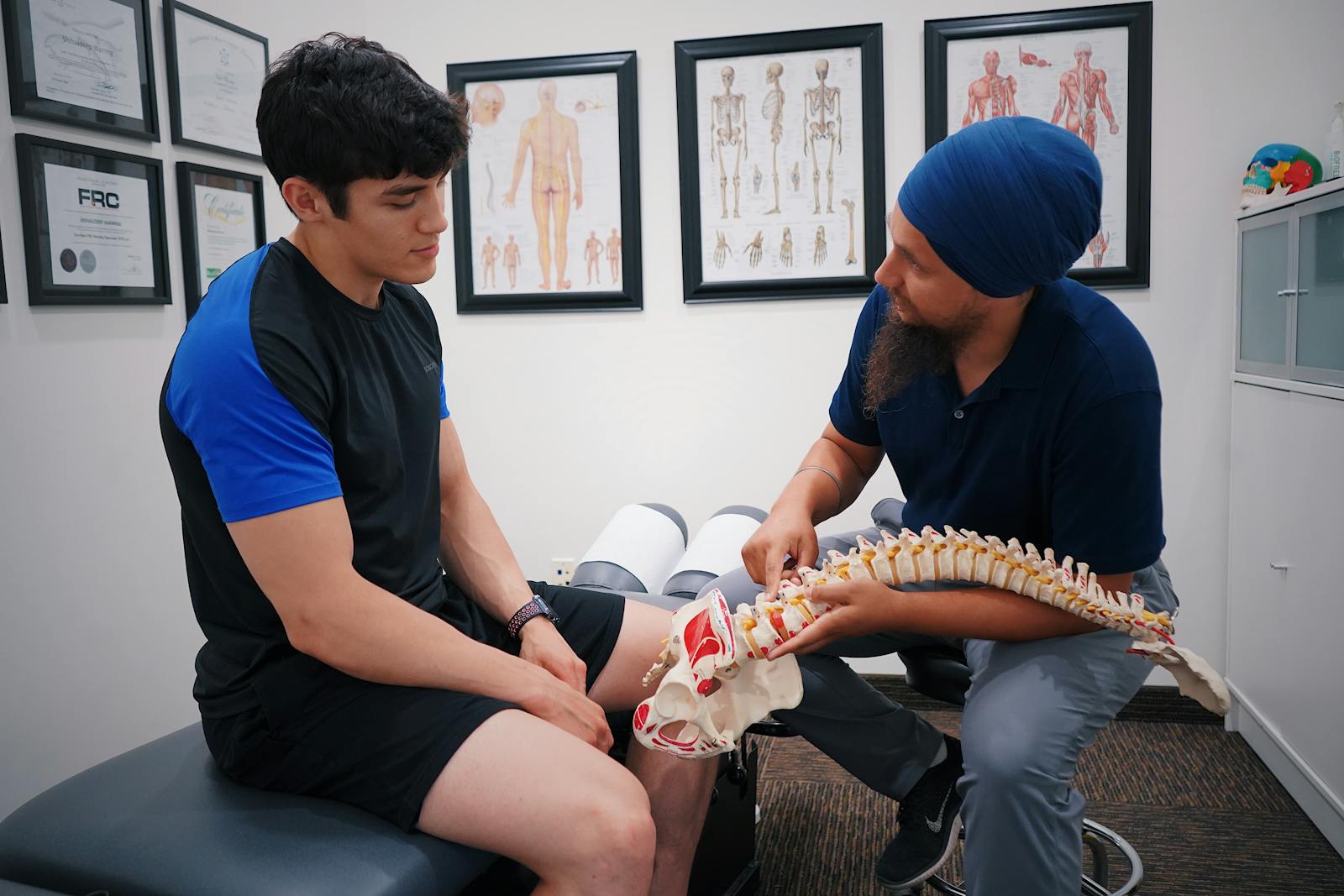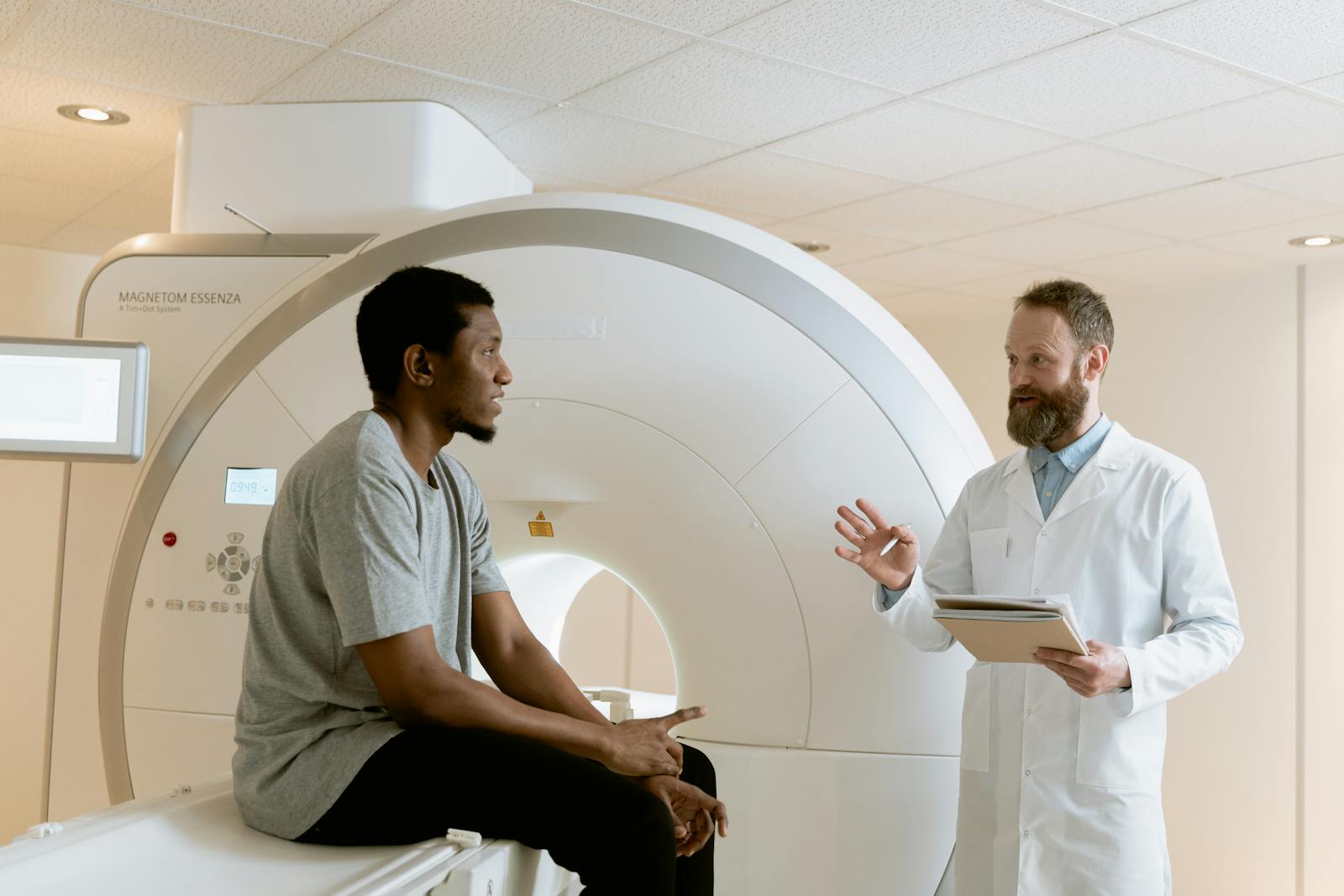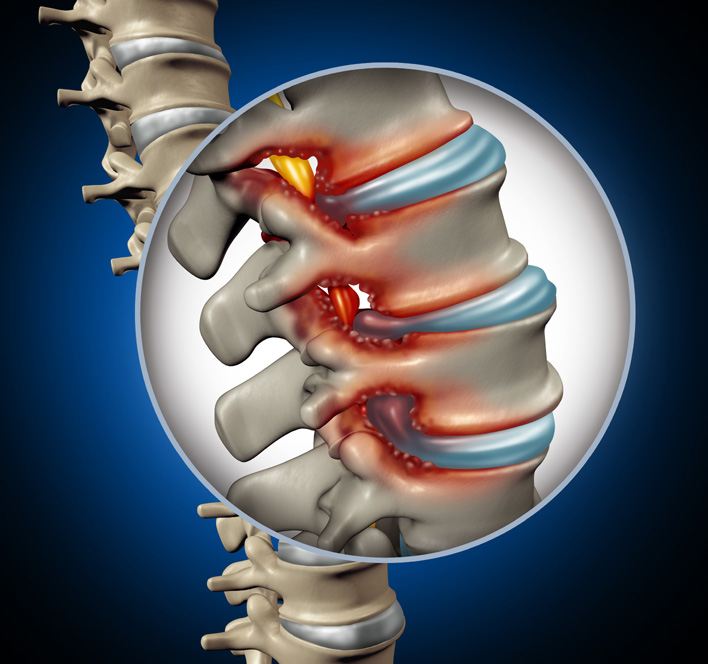The complex structure of the spinal column, comprising an intricate assembly of vertebrae, discs, and neural elements, serves as the body’s main support system, facilitating movement and safeguarding delicate components of the central nervous system. Often, the nuances of its function and the impact of degenerative changes on an individual’s quality of life are overlooked. The ensuing discourse aims to shed light on these aspects and provoke thoughtful consideration about maintaining spinal health and managing associated conditions.
Understanding the Spinal Column
Delving into the complexities of the spinal column, it becomes evident that this intricate structure plays a pivotal role in the human body, facilitating both movement and protection for the central nervous system. The history of Columna Vertebral, or spinal column, dates back millions of years and has been a topic of enduring fascination for scientists and medical practitioners alike.
The concept of spinal flexibility is a primary aspect of the spinal column’s functionality. It is this flexibility that allows for a wide range of movements, from bending and twisting to supporting the weight of the body. Spinal flexibility, however, is not without its limitations. The column is delicately balanced, and excessive or improper movements can lead to injury or degenerative conditions affecting the vertebrae and intervertebral discs.
The Columna Vertebral history offers a fascinating insight into the evolution of vertebrates, including humans. From the earliest fish with rudimentary vertebrae to the complex human spinal structure, the journey is remarkable. In the human body, the spinal column is a reflection of evolutionary design, balancing flexibility with strength, and protection with mobility, reflecting the intricate interplay between form and function.
Anatomy of the Spinal Column
The anatomy of the spinal column is of paramount importance to comprehend its physiological roles and potential pathological conditions. This section will meticulously analyze the structural components of the spine, their functions, and the implications of their dysfunction. We will also explore the various spinal disorders and their respective treatment options in the clinical context.
Spinal Column Structure
Comprising an intricate series of interconnected bones, muscles, ligaments, and nerves, the human spinal column serves as a complex structural scaffold that anchors the body and protects the delicate spinal cord. Over the course of vertebral evolution, the structure of the spine has become increasingly specialized to allow a remarkable degree of spine flexibility while still providing stability.
Anatomically, the spinal column can be broken down into several key components:
- Vertebrae: The individual bones that stack to form the spine.
- Intervertebral discs: These act as shock absorbers between each vertebra.
- Spinal cord: The main pathway for information connecting the brain and peripheral nervous system.
- Nerve roots: Branches of the spinal cord that carry signals to and from the rest of the body.
- Soft tissues: Muscles and ligaments supporting the spine structure.
Function of Spine
Beyond its structural role, the spinal column performs several crucial functions that contribute to the overall well-being and functionality of the human body. One of the key functions is to provide the necessary spine flexibility, allowing for a wide range of movements, including bending, twisting, and stretching. This flexibility is maintained through a complex system of intervertebral discs, ligaments, and muscles that work in unison. However, with spinal aging, there is a gradual decline in this flexibility due to degenerative changes in the intervertebral discs and the surrounding musculoskeletal structures. This can lead to a decreased range of motion, increased stiffness, and potentially, discomfort or pain. Understanding the function of the spine is crucial for maintaining optimal health and mobility.
Spinal Disorders and Treatments
Delving into the anatomy of the spinal column offers a clear perspective on various spinal disorders and the corresponding treatment options available. These disorders can stem from numerous sources – hereditary factors, degenerative conditions, trauma, or tumors. To counteract these issues:
- Spinal surgery advancements have greatly improved the prognosis for patients.
- Minimally invasive procedures have reduced recovery times.
- New technology permits more precise surgical procedures.
- Alternative therapy benefits include pain reduction without surgical intervention.
- Physical therapy, chiropractic care, and acupuncture are viable options for many patients.
These advancements and alternatives provide hope for those suffering from spinal conditions. Understanding the anatomy of the spinal column is essential in diagnosing and treating these disorders.
The Vertebrae: Building Blocks
The structure of the spinal column hinges on the intricate assembly of vertebrae, which serve as the fundamental building blocks of this critical anatomical framework. These individual bony segments, stacked together, form the robust pillar that supports the body while also providing a conduit for the spinal cord.
The vertebrae’s evolution is a fascinating tale of biological adaptation spanning millions of years, as evidenced by paleontological findings. Early vertebrates displayed a simple notochord for support, which gradually evolved into the complex, segmented structure we observe in humans today. This evolutionary leap enhanced mobility and flexibility, fostering the emergence of upright posture and bipedal locomotion.
Each vertebra comprises a main body for weight-bearing, a vertebral arch enclosing the spinal cord, and several processes for the attachment of muscles and ligaments. The vertebrae vary in size, shape, and attributes, from the cervical to the lumbar region, reflecting the different functional demands at each level.
In essence, the vertebrae are the structural and functional keystones of the spinal column, their interconnected design enabling a range of movements while safeguarding the delicate spinal cord. Understanding their intricate architecture and evolution offers critical insights into spinal health and the development of effective treatment strategies for spinal disorders.
The Role of Intervertebral Discs
Intervertebral discs play an essential role in our spinal column, contributing greatly to its functionality. Their primary role involves acting as shock absorbers between the vertebrae, thereby providing flexibility and reducing the impact of physical activity on the spine. However, the degeneration of these discs over time is a natural process that must be thoroughly understood to comprehend various spine-related abnormalities and diseases.
Discs’ Functionality in Spine
Acting as the spine’s natural shock absorbers, intervertebral discs play an essential role in ensuring flexibility and stability of the spinal column. These discs perform important functions that contribute greatly towards Disc Herniation Prevention and Spinal Flexibility Enhancement.
- They bear the weight of the body, thereby protecting the vertebrae from the pressure exerted during movements such as bending and twisting.
- The elasticity of the discs allows them to compress during these movements, providing flexibility to the spine.
- The tough outer layer of the disc serves as a barrier preventing the disc from herniating.
- The interior of the disc contains a gel-like substance that provides cushioning and shock absorption.
- The discs also maintain the spacing between the vertebrae, facilitating the passage of nerves from the spinal cord to the rest of the body.
Understanding Disc Degeneration
Despite their essential role in facilitating spinal flexibility and preventing disc herniation, intervertebral discs are not immune to wear and tear, a condition medically termed as disc degeneration. Disc degeneration causes include aging, spinal injuries, genetic predisposition, and lifestyle factors such as smoking and obesity. Over time, these factors can lead to decreased disc hydration, loss of disc height, and increased spinal rigidity. This degenerative cascade may ultimately result in chronic back pain or neurological symptoms. Surgical interventions, such as disc arthroplasty or spinal fusion, are considered in severe cases where conservative treatment fails. Nonetheless, the choice of intervention requires a thorough evaluation of patient-specific factors and the potential risks and benefits.

Importance of the Spinal Cord
Serving as the primary conduit for neural signals between the brain and the rest of the body, the spinal cord plays a crucial role in the human nervous system and overall bodily function. Its importance cannot be overstated, as any disruption, such as spinal infections or spine cancer, can impact the body’s capacity to perform basic and complex tasks alike.
The spinal cord’s key roles include:
- Signal Transmission: It carries signals to and from the brain, enabling motor, sensory, and autonomic functions.
- Reflex Control: It is responsible for initiating reflex actions, bypassing the brain for immediate responses.
- Body Regulation: It helps regulate body functions like heart rate and body temperature.
- Disease Impact: Spinal infections and spine cancer can disrupt its function, greatly affecting the quality of life.
- Recovery Potential: Despite its susceptibility to injury and disease, the spinal cord has some regenerative capacity, an area of ongoing research.
The Cervical, Thoracic, and Lumbar Spine
Building on our understanding of the spinal cord’s essential role in the human body, it is pertinent to examine the structural divisions of the spinal column itself: the cervical, thoracic, and lumbar spine. Each of these sections, consisting of individual vertebrae, performs unique functions while collectively supporting the body’s stability and providing a conduit for the nervous system.
The cervical spine, comprising seven vertebrae, allows for head movement and supports the skull. Vertebrae identification techniques can be used to differentiate cervical vertebrae, due to their unique features such as transverse foramina. The thoracic spine, with twelve vertebrae, provides attachment points for the ribs and houses the thoracic cavity.
In contrast, the lumbar spine, consisting of five larger vertebrae, bears the body’s weight and facilitates movement. Spinal flexibility exercises are particularly beneficial for the lumbar spine as they promote strength and prevent injuries.
In-depth study of the structural and functional aspects of these spinal divisions will provide a solid foundation for understanding the biomechanics of the spine, ultimately aiding in the prevention, diagnosis, and treatment of spinal conditions.
Common Spinal Column Disorders
We now move on to an examination of common spinal column disorders, a critical area for understanding overall spinal health. Identification of these disorders is crucial, as correct diagnosis can greatly impact patient prognosis and treatment plans. This discussion will also encompass the various treatment options available, which range from conservative management to more invasive procedures, depending on the severity and nature of the disorder.
Identifying Spinal Column Disorders
While the spinal column is designed to be strong and flexible, various disorders can compromise its function, leading to a range of symptoms that require careful identification and diagnosis. Scoliosis awareness is crucial as this disorder, characterized by a sideways curvature of the spine, often develops in preteens.
Some common spinal column disorders include:
- Scoliosis: noticeable during growth spurts in adolescents
- Herniated disc: often the result of wear and tear
- Spinal stenosis: typically affecting older individuals
- Osteoporosis: may lead to painful fractures
- Degenerative disc disease: primarily a result of aging
Chiropractic benefits include the ability to identify these disorders early on through physical examination and imaging techniques, enabling prompt intervention and management.
Treatment Options Available
Exploring the various treatment options for common spinal column disorders necessitates a comprehensive understanding of each condition and the therapeutic interventions available. These range from alternative therapies, such as chiropractic care, physical therapy, and acupuncture, to surgical innovations in minimally invasive spine surgery. The choice of treatment is determined by the severity of the condition, patient’s overall health, and the expected outcome. Alternative therapies are typically the first line of treatment, offering non-invasive relief and rehabilitation. However, when these therapies do not provide sufficient relief, or when the condition is severe, surgical innovations come into play. These advancements have revolutionized spinal treatment, reducing recovery times and enhancing patient outcomes. The most effective approach combines an understanding of the disorder with a patient-centered treatment plan.
Prevention of Spine-Related Issues
Regularly engaging in important physical activities and maintaining a healthy lifestyle can greatly contribute to the prevention of spine-related issues. Key elements to contemplate include maintaining good posture, regular exercise, and workplace ergonomics.
Studies show that regular exercise benefits the spine by improving strength and flexibility. Exercise routines that focus on core strengthening and stretching are particularly advantageous. It’s also vital to maintain a healthy weight, as excessive weight can put undue pressure on the spine, leading to potential issues.
Proper workplace ergonomics is another critical factor in spine health. Here are some key points to ponder:
- Make sure your workstation is set up to promote good posture with a chair that supports your lower back and a desk at the right height.
- Confirm your computer screen is at eye level to prevent straining your neck.
- Regularly stand and stretch to break up long periods of sitting.
- Use a headset if you frequently talk on the phone to prevent neck strain.
- Invest in a quality mattress and pillows that support your spine during sleep.

Diagnosis and Treatment Options
Despite best efforts in prevention, diagnosing spine-related issues can sometimes remain a necessity, leading us to the examination of various options for diagnosis and treatment. Diagnosis methods for spinal conditions have advanced greatly over the years. Medical technology now offers a range of non-invasive options such as X-rays, MRI scans, and CT scans, which provide detailed images of the spine, enabling physicians to identify abnormalities with precision.
Once a diagnosis is made, treatment advancements have expanded the arsenal of options available to patients and physicians. Conservative treatments remain the first line of defense, including physical therapy, pain management using medication, and lifestyle modifications. However, if these prove insufficient, the use of more invasive procedures might be necessary. These could range from epidural steroid injections to surgical interventions such as discectomies or spinal fusion surgeries.
Recently, we have seen the emergence of minimally invasive surgical techniques, which offer patients reduced post-operative pain, less blood loss, and shorter hospital stays. Additionally, advancements in spinal cord stimulation and regenerative medicine hold immense potential for the future. While prevention is key, the progress in diagnostic and treatment modalities offers hope for those grappling with spinal conditions.
Impact of Posture on Spinal Health
The undeniable influence of posture on spinal health constitutes an essential aspect of holistic spine care, as improper alignment can precipitate an array of detrimental conditions, exacerbating pre-existing issues and potentially instigating new ones. Poor posture, often resulting from prolonged periods of sitting or standing in awkward positions, can lead to chronic pain, reduced mobility, and even degenerative diseases over time.
There are various strategies to mitigate the adverse effects of poor posture, including:
- Regular engagement in posture correction exercises
- Use of ergonomic workspaces designed to promote correct alignment
- Regular breaks from sitting or standing to shake off tension
- Practice of mindfulness to maintain an awareness of one’s posture
- Regular check-ups with a health professional expert in spine care
Ergonomic workspaces, for instance, can provide the necessary support for the back, neck, and shoulders, reducing strain and promoting a healthier spinal alignment. Similarly, posture correction exercises can help strengthen the muscles that support the spine, enhancing stability and flexibility.
Maintaining a Healthy Spine
Outside the sphere of posture correction, a pivotal approach to maintaining a healthy spine encompasses a range of proactive measures, including diet, lifestyle, and preventive care. This is where spine nutrition comes into focus, highlighting the need to incorporate certain vitamins and minerals, such as calcium and vitamin D, in our dietary intake to promote bone strength and spinal health.
Moreover, lifestyle factors like regular physical activity play an essential role in supporting the spine. Exercise benefits not only include improved muscle strength and flexibility, but also enhanced blood circulation to the spine, facilitating nourishment of the spinal discs.
Preventive care is another integral facet of a healthy spine. Regular check-ups can aid in early detection of potential spinal issues, while therapies such as massage and acupuncture can help relieve tension and promote spinal alignment.
In the context of an aging population and the increasing prevalence of sedentary lifestyles, the importance of a healthy spine cannot be overstated. It is essential to adopt an all-encompassing approach that incorporates spine nutrition and exercise benefits, along with preventive care, to safeguard the longevity and functionality of the spinal column.
Frequently Asked Questions
What Is the Role of the Spinal Column in Human Movement?
The spinal column, key in human movement, provides structural support and houses the spinal cord. Its intricate anatomy allows flexibility and motion, but can also be prone to spinal diseases affecting mobility and nervous system function.
How Does Aging Affect the Health of the Spinal Column?
Aging can adversely affect the spinal column’s health through progressive degeneration, often exacerbated by osteoporosis. Preventative measures such as maintaining physical activity and a balanced diet, can help delay this degenerative process.
Can Physical Exercises Improve the Strength of the Spinal Column?
Yes, physical exercises can greatly enhance the strength of the spinal column. Regular exercise aids in spinal injuries prevention and promotes posture correction techniques, thereby enhancing overall spinal health and mitigating age-related degeneration.
What Are the Risks Associated With Spinal Column Surgery?
Spinal column surgery carries risks such as infection, nerve damage, and blood clots. Hence, contemplating surgery alternatives is essential. Post-operation care, including physical therapy, can mitigate potential complications and promote recovery.
How Does Obesity Impact the Health of the Spinal Column?
Obesity greatly affects spinal health, worsening stress on the structure. Dietary impacts and weight loss strategies are vital, as reducing body mass can alleviate pressure, mitigate damage, and promote overall spinal health.

